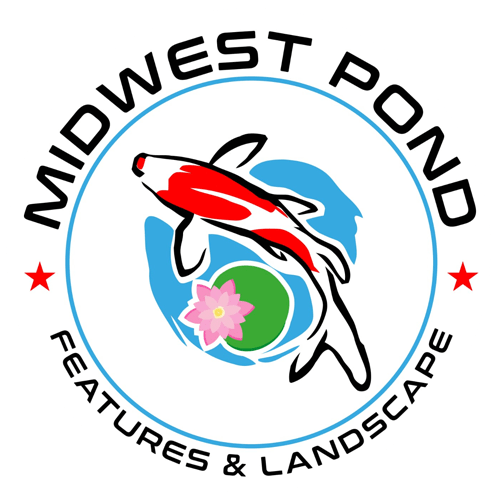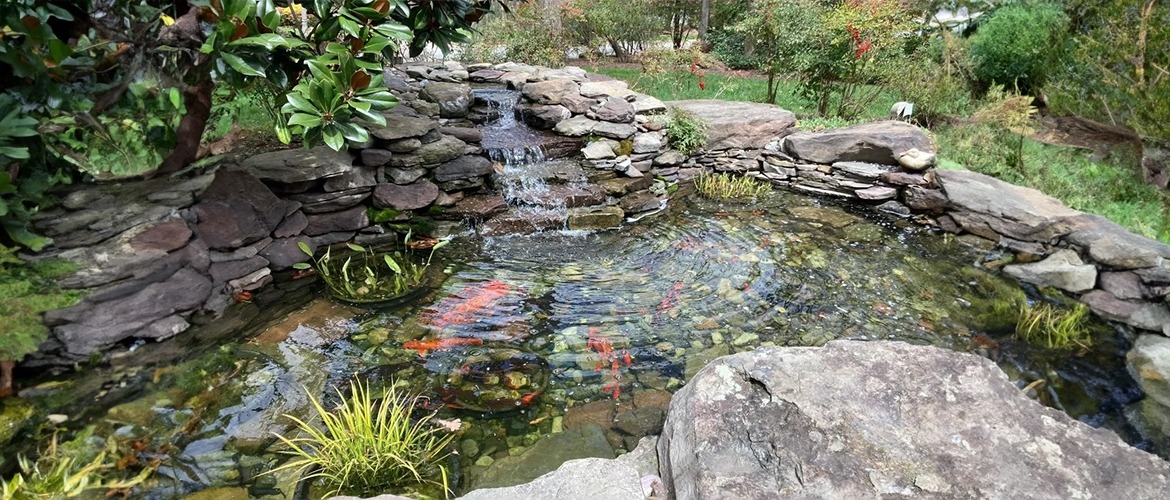(Podcast Episode)
How to Build a Pond or Water Garden in Your Yard (9 Steps To Keep In Mind)
Learning How to Build a Pond or Water Garden in Your Yard is necessary to change your garden. It will benefit wildlife and add serenity, movement, and a relaxing soundtrack to your plot, creating a thriving environment for an infinite variety of wildlife.
It’s like bringing a piece of nature right to your doorstep! With ponds becoming all the rage, more and more people are getting help from pond installation companies like “Midwest Pond Features and Landscape.”
But why are people so keen on having one? Well, imagine relaxing by a beautiful pond, surrounded by colorful plants and maybe even some friendly fish swimming around. It’s not just about looks, though!
Ponds bring lots of good stuff for the environment, too. So, are you ready to learn how to Build a Pond or Water Garden in Your Yard with the help of Midwest Pond Features and Builder?
9 Steps to Building a Pond or Water Garden in Your Yard
Planning Your Pond
Before you start digging, take time to plan your dream pond! First, find the perfect spot in your yard where it can shine. Consider the size and shape you want, ensuring it fits your space and style.
Here’s the important part: check your local rules and get any needed permits for building the pond. It’s essential to follow the regulations to avoid any trouble later. Planning may not be as exciting as seeing your pond, but trust us; it’s worth the effort! Once you’ve sorted everything out, you’ll be one step closer to your relaxing oasis.

Choosing a Location for a Pond
Selecting the perfect spot for your pond is crucial! Look for level ground with good drainage. Keep it close to a GFCI outlet for the pump’s power cord, and plan a direct line to your house.
Be cautious of underground pipes or sewer lines. Have a nearby outdoor faucet for easy water filling. Consider sunlight and shade; more sun means more plant choices. If adding fish, balance with some shade to prevent excessive algae growth.
Avoid large trees and windy areas, as leaves and debris can dirty the water and clog the pump. A well-planned location ensures a beautiful and low-maintenance pond!
Choosing the Right Pond Design
There are various pond types: natural, formal, and water gardens. Each has its pros and cons, suiting different yard styles. It’s essential to pick one that blends well with your landscape for a harmonious and stunning backyard retreat.
Selecting Suitable Pond Materials
When building a pond, you’ll need essential materials and tools like liners, pumps, filters, and rocks. The liner keeps water from seeping into the ground. At the same time, the pump circulates and aerates the water, maintaining a healthy environment.
Filters help remove debris and keep the water clear. Using high-quality materials is crucial for long-lasting results. Look for eco-friendly options like flexible PVC liners and energy-efficient pumps, which benefit your wallet and the environment.
As for tools, a garden spade, round point shovel, and garden rake help with excavation, while a cutter mattock and bricklayer’s hammer come in handy for shaping the pond. All-purpose sand is useful for leveling the ground. If you need more clarification about the material guide, connect with backyard pond builder Midwest Pond Features and Landscape.
Designing the Water Garden
Designing a captivating water garden involves combining waterfalls, fountains, and aquatic plants. Incorporate water features to add a soothing ambiance and a focal point to the park. Balance aesthetics with functionality by ensuring proper water circulation and oxygenation.
Selecting various aquatic plants enhances the pond’s beauty while providing shelter and food for wildlife. A harmonious water garden attracts birds, butterflies, and beneficial insects, improving biodiversity.
Consider the pond’s size and location, ensuring it complements the surrounding landscape. A thoughtfully designed water garden brings visual delight and ecological benefits to your outdoor space.

Excavation and Pond Installation
Let’s discuss the step-by-step process of excavating and preparing the pond area for installation.
- Choose the ideal location for the pond in your yard.
- Mark the area where the pond will be excavated.
- Use a garden spade and shovel to dig the pond’s shape and depth, ensuring precision.
- Smooth the bottom and sides of the excavated area using a garden rake.
- Place the pond liner carefully, ensuring it covers the entire excavated area.
- Secure the liner’s edges and corners to prevent leaks.
- Install the pond filter and pump, connecting them to the appropriate power source.
- Add rocks and stones around the pond’s edges for a natural look and to support the liner.
- Fill the pond with water and adjust the liner and rocks for a seamless finish.
Precision during excavation is vital for the pond’s structural integrity. Accurate digging ensures the pond has the right shape and depth, preventing leaks and potential issues later. If unsure, it’s wise to seek help from professional pond builders to guarantee a well-built and long-lasting pond.
Installing Pond Equipment and Features
To ensure your pond functions smoothly, proper installation of equipment is key. Place filters, pumps, and lighting systems strategically for efficiency. Position water features like waterfalls and fountains to create a pleasing visual effect and soothing sound.
Opt for energy-efficient equipment, reducing costs and improving long-term maintenance. A well-installed and thoughtfully designed pond brings beauty and ease to your backyard sanctuary.
Adding Aquatic Plants and Wildlife
Select aquatic plants that suit your pond’s ecosystem, like water lilies and floating plants. These plants play a crucial role in maintaining water quality by absorbing excess nutrients and providing oxygen.
They also create habitats for wildlife, attracting beneficial insects and frogs. Introducing fish adds another dimension to your pond, as they help control mosquito larvae and add movement and life to the water. A well-balanced combination of plants and wildlife ensures a thriving and vibrant pond ecosystem, enhancing its beauty and ecological value.
Maintaining Your Pond
To keep your pond at its best, regular maintenance is essential. Schedule routine cleaning to remove debris and keep the water clear. Control algae growth with natural methods or treatments. Monitor water quality regularly, checking for pH levels and any imbalances.
In collaboration with a backyard pond builder or installation company, devise a seasonal maintenance plan to address specific annual needs. With proper care, your pond will remain healthy, beautiful, and a joyful addition to your outdoor space.
FAQs
Is it expensive to build a pond?
The cost of building a pond varies depending on its size, design, and materials used. While it can be affordable for smaller DIY projects, larger or more intricate ponds might be more expensive, especially when hiring professionals for installation.
How can I find backyard pond installers near me?
To find backyard pond installers near you, search “backyard pond installation near me.” Also, consider contacting Midwest Pond Features and Landscape, a reputable company known for its expertise in building beautiful and functional ponds in the area.
Wrap Up
A pond or water garden in your yard offers numerous benefits, including a peaceful retreat and improved biodiversity. Following the outlined pond construction and maintenance steps, you can create a stunning and eco-friendly oasis. For a seamless and professionally done project, consider seeking assistance from experienced pond-build companies like Midwest Pond Features and Landscape, experts in turning your backyard dreams into reality.

